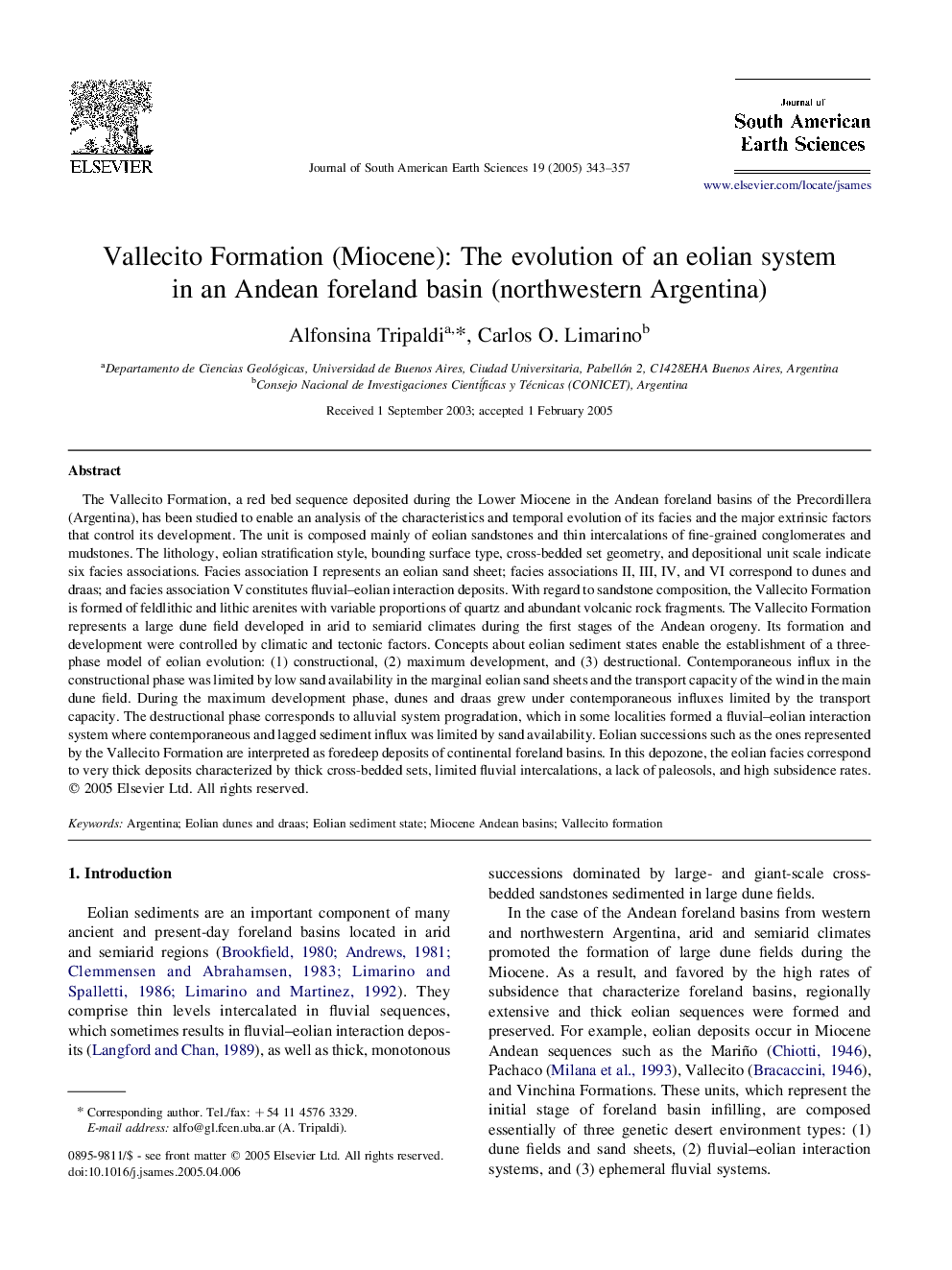| Article ID | Journal | Published Year | Pages | File Type |
|---|---|---|---|---|
| 9524411 | Journal of South American Earth Sciences | 2005 | 15 Pages |
Abstract
The Vallecito Formation, a red bed sequence deposited during the Lower Miocene in the Andean foreland basins of the Precordillera (Argentina), has been studied to enable an analysis of the characteristics and temporal evolution of its facies and the major extrinsic factors that control its development. The unit is composed mainly of eolian sandstones and thin intercalations of fine-grained conglomerates and mudstones. The lithology, eolian stratification style, bounding surface type, cross-bedded set geometry, and depositional unit scale indicate six facies associations. Facies association I represents an eolian sand sheet; facies associations II, III, IV, and VI correspond to dunes and draas; and facies association V constitutes fluvial-eolian interaction deposits. With regard to sandstone composition, the Vallecito Formation is formed of feldlithic and lithic arenites with variable proportions of quartz and abundant volcanic rock fragments. The Vallecito Formation represents a large dune field developed in arid to semiarid climates during the first stages of the Andean orogeny. Its formation and development were controlled by climatic and tectonic factors. Concepts about eolian sediment states enable the establishment of a three-phase model of eolian evolution: (1) constructional, (2) maximum development, and (3) destructional. Contemporaneous influx in the constructional phase was limited by low sand availability in the marginal eolian sand sheets and the transport capacity of the wind in the main dune field. During the maximum development phase, dunes and draas grew under contemporaneous influxes limited by the transport capacity. The destructional phase corresponds to alluvial system progradation, which in some localities formed a fluvial-eolian interaction system where contemporaneous and lagged sediment influx was limited by sand availability. Eolian successions such as the ones represented by the Vallecito Formation are interpreted as foredeep deposits of continental foreland basins. In this depozone, the eolian facies correspond to very thick deposits characterized by thick cross-bedded sets, limited fluvial intercalations, a lack of paleosols, and high subsidence rates.
Keywords
Related Topics
Physical Sciences and Engineering
Earth and Planetary Sciences
Earth and Planetary Sciences (General)
Authors
Alfonsina Tripaldi, Carlos O. Limarino,
